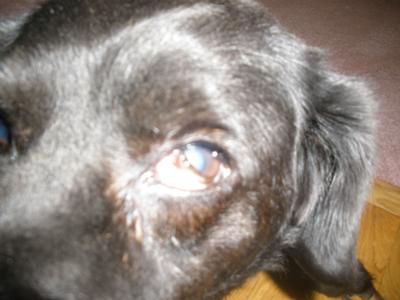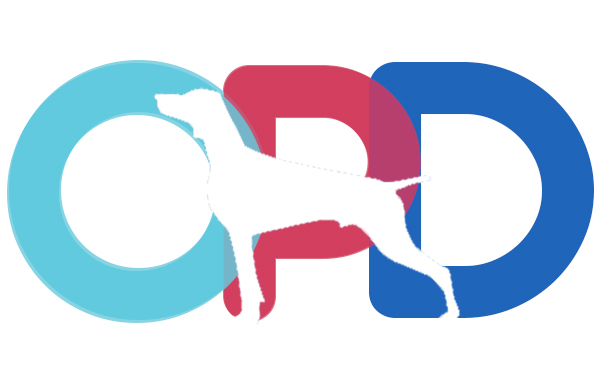by Steve
(Massachusetts)

Milky area at left part of eye
The inner corner of my dog’s left eye has a milky area. Can’t get her to hold still long enough to tell if there is any swelling or change in shape of the eyeball itself. She seems to be seeing ok although her peripheral isn’t what it used to be “back in the day”. Don’t remember seeing the milky area on Sunday before we left for a short trip, but it was there last night (Tuesday 8/9).
Ally-oop is a 12.5 yo Spayed Female Black Lab mix (no idea with what), we’ve had her since 10 wks. She’s been diagnosed with Hypothyroidism, daily treatment 0.2mg 2x of Levothyroxine; Arthritis/bone spur daily treatment 50 2x of Tramadol and 50mg 2x Rimadyl. Last check, she was around 50 lbs. Shares with her litter-mate sister a diet of 3 cups a day for both dogs combined (per vet). Sometimes she gets to it first sometimes Pongo does. Each day pretty much balances out. Vet says both dogs are “obese” thus the reduced amount of food.
Food: Wellness White Fish & Sweet Potato. Very little else to eat other than cream cheese or peanut butter 2x/day to take her oral meds. Due to Pongo’s skin allergies we have stopped all manufactured treats although they may get an occasional slice of roast beef or turkey from the cold-cut drawer when I make a sandwich. Pretty sedentary lifestyle. She goes out to do her business 2 or 3 times each day, doesn’t drink too much water. I fill their 1-qt bowl usually once a day.
Sometimes runs around for a few minutes chasing or being chased with Pongo, but is slowing down, (ex: takes the stairs slowly, and only when she *has* to). No longer jumps up on the bed (she’s been doing that since she could pounce up that high) and spends a lot of time laying down on the cool marble tile in front of the fireplace. Loves to try & steal food off the table or counters. Very rarely successful, although she can now pull the chair away from the table (I’ve seen the teeth marks on the chair) and manages get up on the chair (all fours) but all that noise usually alerts us before she begins dining on our food. Nothing wrong with her nose at least when it comes to a potential snack!
Recently our A/C was broken for a month and Ally was panting constantly, day and night. Much moreso than Pongo. I thought it was just the added heat and humidity in the house. It was a full week of comfy 74 degrees in the house before the panting subsided, but it has subsided.



